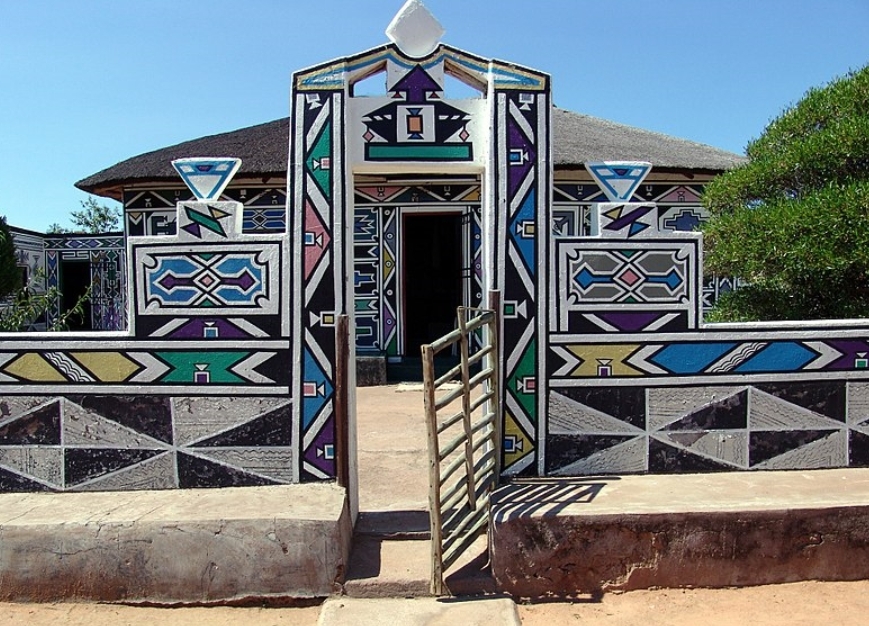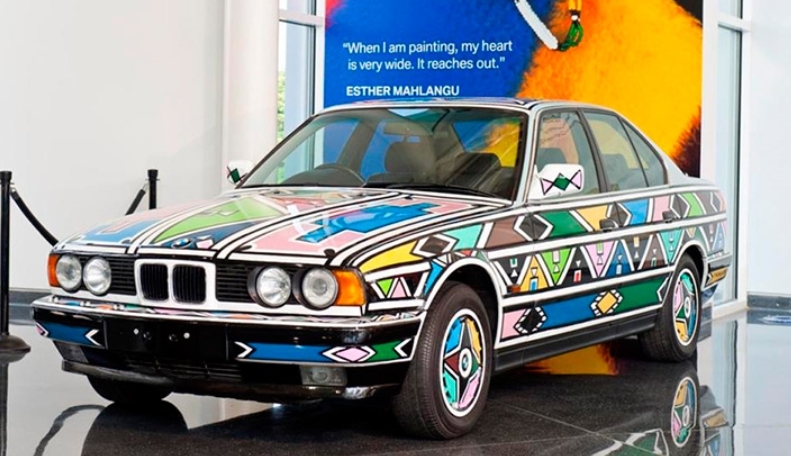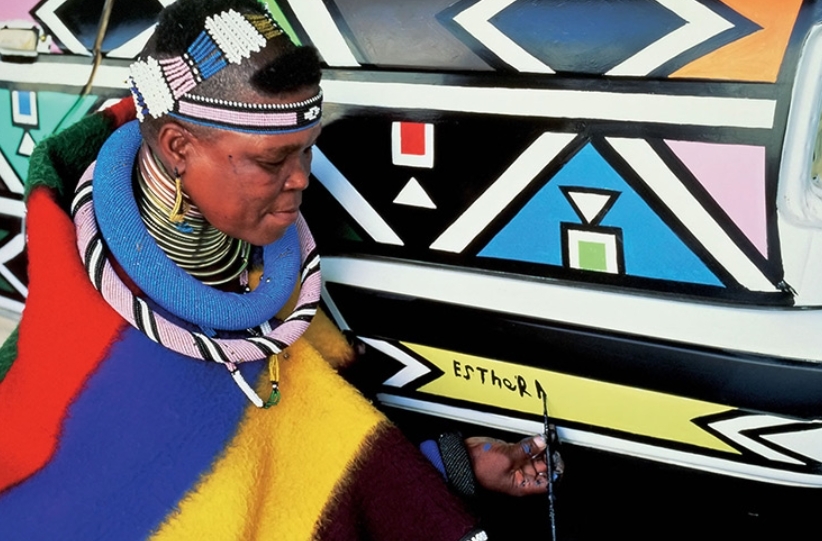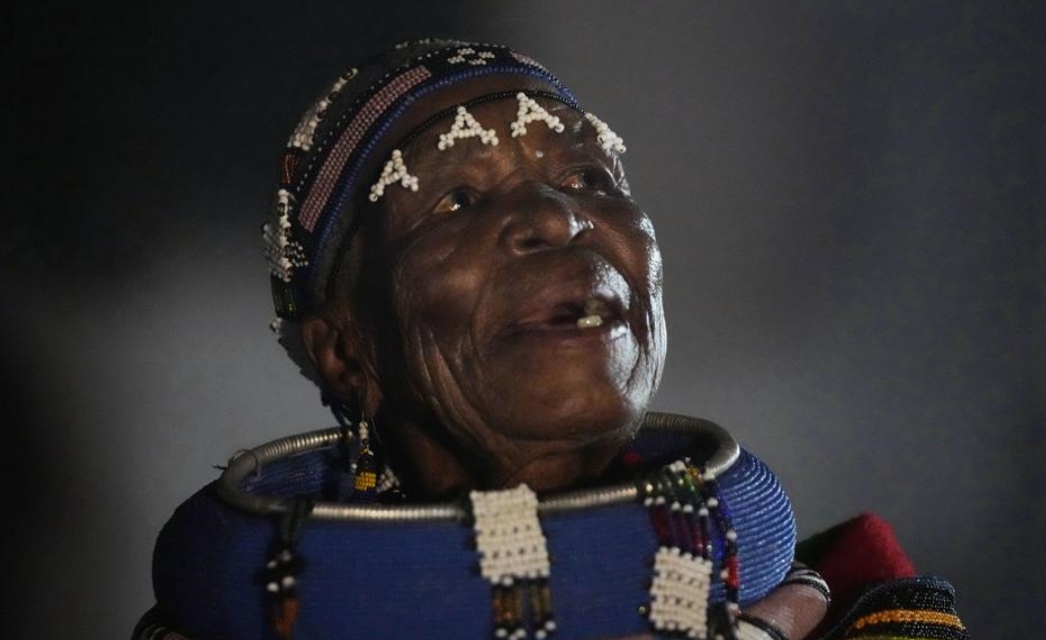Famous for her unique drawings on traditional huts and many buildings with vivid geometric designs, Mahlangu (86 years old) from Middelburg, South Africa introduced the traditional craft of the Ndebele community. thousands of generations passed down through the generations and earned a unique place in the world of contemporary abstract art.
Mahlangu was born in 1935 in a rural area in Middelburg province, South Africa. She started learning to paint at the age of 10 and her current “skillful” exterior painting skills were taught by Mahlangu’s mother and grandmother.
In South Africa, especially the southern region, where a large number of Ndebele people live, the art of “Ndebele house painting” is a typical cultural feature that people perform mainly. are women. And that is also the place where Mahlangu’s love of art is nurtured.
The 86-year-old artist’s work is distinguished by its bright geometric shapes, influenced by the indigenous Ndebele people. The patterns are often painted with chicken feathers, presenting a striking contrast in color with thick and bold black lines, and details created mainly by straight lines. It is one of the most time-consuming and difficult to create African art forms.

Ms. Mahlangu’s art was first noticed by the international community through an art exhibition called “Magiciens de la terre” (Magicians of humanity) held in France in 1989. After that, In 1991, she was invited by the famous German luxury car company BMW to cooperate to create exclusive motifs for its cars. Then in 1994, these cars were displayed at the National Museum of Women in the Arts in Washington, USA. It is one of her signature works to preserve and promote traditional Ndeble art that is in danger of being lost.
Ndebele art was created by the women of the Ndebele tribe in the 18th century as a way of communication between people in the community. The rectangular, triangular and diamond patterns meticulously painted on the walls and fences are stories that tell about important events and milestones in people’s lives such as birth, death, wedding or date. first to school. However, in recent years, this art has gradually disappeared when there are not many veteran artists, while the younger generation is not very interested in this traditional art form.

Unwilling to stand by and watch the cultural heritage of his homeland gradually disappear, Mahlangu was determined to promote and nurture traditional art. She spends most of her time doing community projects in Mabhoko and built an art school with the proceeds of her painting sales with the desire to teach children painting and decorating skills. Here, instead of brushes, the children use their skillful fingers and soft feathers to create their own works on the Ndebele art platform.
“My work is a celebration of the community culture, the culture of the Ndebele people, which makes me proud to see this culture spread around the world. People can see them in Africa, Europe, America. That’s Ndebele,” said Mahlangu proudly.

“We have to teach young people about their roots, where they come from, what culture they come from. The younger generation must be proud of the culture of the community and pass this on to the next generation. That’s what we have to do,” she added.
In 2006, the South African Government honored the artist with the Order of Ikhamanga and the French Ministry of Culture presented her with the Mpumalanga Arts and Culture Award in recognition of her tireless dedication to the traditional art of Ndebele.

